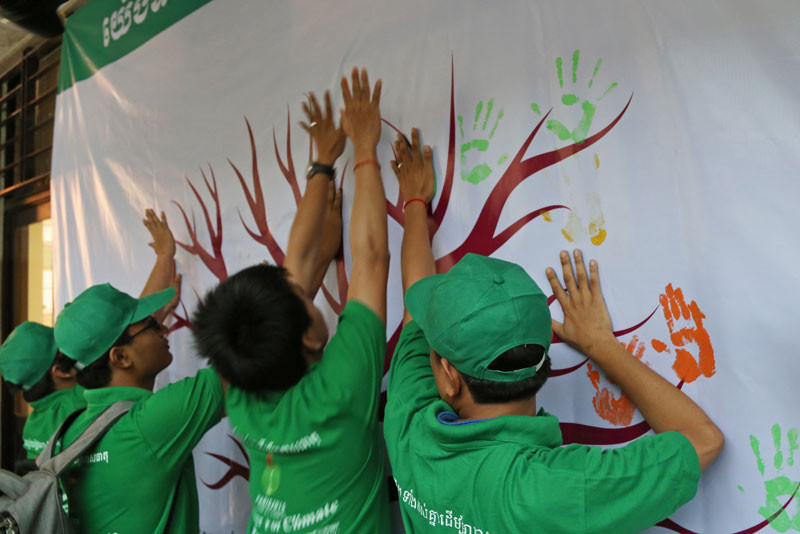On the eve of the 2015 Paris Climate Conference, about 140 young people gathered in Phnom Penh on Sunday to discuss the effects of climate change on Cambodia and ways that it can be mitigated.
The “Together for Climate” event held at the Cambodia-Japan Cooperation Center was co-organized by the Cambodia Climate Change Network (CCCN), a coalition of conservation groups, and a few other organizations.

“There is no doubt that Cambodia is one of the most vulnerable countries” to climate change, CCCN chairman Tep Boonny said in a speech at the event. “Climate disruption would have dreadful consequences for the environment and for biodiversity, as well as for public health, poverty, development, security and peace.”
Cambodia is ranked among the 10 countries most vulnerable to climate change according to the U.N., because it is already prone to shifting weather patterns, droughts and flooding.
According to a report by the U.N.’s Development Program and the National Committee for Disaster Management, 2,050 people died from natural disasters between 1996 and 2013.
“To be ready for the negative impacts of climate change and natural disaster, Cambodia has put in place policy frameworks,” Mr. Boonny said. “However, the resources for the implementation of this policy are still lacking.”
In 2013, the government launched its Climate Change Strategic Plan 2014-2023, the country’s first comprehensive policy on climate change. The government’s Intended Nationally Determined Contribution, which it submitted for the Paris conference, expands on that plan by outlining policy priorities, including improving the capacity for community-based adaptation, developing flood protection systems and promoting climate-resilient agricultural methods.
At Sunday’s event, the audience of mostly university students watched animations illustrating how factories and transportation contribute to greenhouse gas emissions, and how deforestation and monoculture, such as rubber plantations, degrade the environment.
While many who attended said they were already aware of the impacts of climate change, some students said it was the first time they thought about Cambodia’s role in mitigating the problem.
“I didn’t know [about] it because we are just a developing country,” said Ean Chanborith, 20. “Poor countries are part of climate change —part of the impact and also part of the countries that need to help.”
Youth engagement is crucial to the implementation of the government’s climate change plan, said Kalo Sorita, a technical adviser at SNV, a sustainable-energy NGO that co-organized the event.
“When they know about the problem, they are the new generation so maybe they come up with new ideas, new concepts,” she said.
Mr. Chanborith said he would try to help in a small way first.
“Me or other students, maybe we can be a small part of it: reduce the way I use paper, or reduce how I ride [my] moto.”




